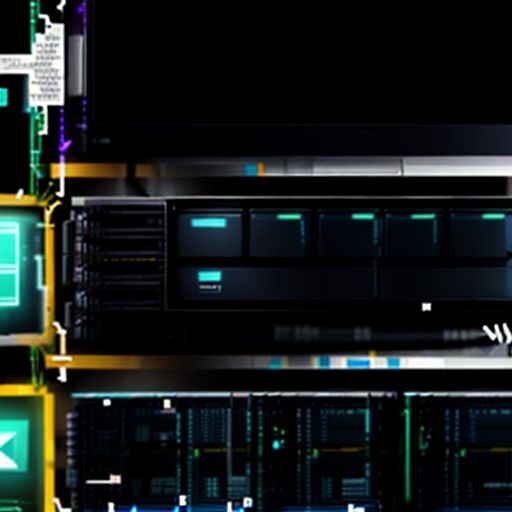Imagine this: you’re planning to launch a website or application, and the buzz around cloud hosting has caught your attention. You’ve heard whispers of scalability, reliability, and cost-effectiveness, particularly with Amazon Web Services (AWS). But then comes the big question: how much will AWS cloud hosting actually set you back?
Understanding Aws Cloud Hosting Pricing can feel like navigating a labyrinth. With its vast array of services and flexible pricing models, it’s easy to get lost in the details. Fear not! This guide is your compass, designed to demystify AWS cloud hosting pricing and empower you to make informed decisions for your business.
What Factors Influence Aws Cloud Hosting Pricing?
Unlike traditional hosting with fixed monthly plans, AWS pricing operates on a pay-as-you-go model. This means you only pay for the resources you use, offering great potential for cost optimization. However, several factors influence your final bill:
1. Compute Services (EC2 Instances)
At the heart of your AWS infrastructure lie EC2 instances, virtual servers that power your applications. The type of instance you choose (based on factors like CPU, RAM, storage, and networking capacity) directly impacts your costs. AWS offers various instance families optimized for different workloads, from general purpose to compute-intensive tasks.
2. Storage Options (S3, EBS, etc.)
AWS provides various storage solutions to cater to diverse needs. Amazon S3 (Simple Storage Service) offers scalable object storage ideal for static content, backups, and data archives. For persistent block storage attached to your EC2 instances, you have Amazon EBS (Elastic Block Storage).
3. Data Transfer Costs
Moving data around comes at a price. Data transfer into AWS is generally free, while transferring data out incurs charges. This is particularly relevant if you have high-bandwidth applications or frequently move large datasets.
4. Database Services (RDS, DynamoDB)
If your application relies on databases, you’ll need to factor in the cost of database services. AWS offers managed database solutions like Amazon RDS (Relational Database Service) for traditional databases and DynamoDB for NoSQL databases.
5. Additional Services
AWS offers a plethora of additional services, each with its pricing model. These can range from networking services (VPC, Route 53) to security features (AWS WAF, Shield) and monitoring tools (CloudWatch).
Frequently Asked Questions about Aws Cloud Hosting Pricing
1. How does AWS pricing compare to traditional hosting providers?
While traditional hosting often presents seemingly simpler pricing plans, AWS’s pay-as-you-go model can be significantly more cost-effective, especially as your needs scale. With traditional hosting, you often pay for resources you don’t fully utilize, while AWS allows you to scale up or down based on actual demand.
2. What are AWS Free Tier options?
AWS offers a Free Tier for new users, allowing you to experiment with various services for free within certain usage limits. This is an excellent opportunity to get hands-on experience and estimate costs before fully committing.
3. Are there tools to help estimate and manage AWS costs?
Yes, AWS provides tools like the AWS Pricing Calculator and AWS Cost Explorer to help you estimate costs upfront and track your spending in real-time. You can optimize your resource utilization and identify potential cost savings.
Making Sense of Related Keywords: Understanding the AWS Ecosystem
Beyond “AWS cloud hosting pricing,” understanding related keywords is crucial for navigating the AWS landscape:
1. AWS EC2 Pricing:
This keyword dives into the specifics of pricing for EC2 instances, the core compute service in AWS. Understanding different EC2 instance types, pricing models (on-demand, reserved instances, spot instances), and pricing variations across regions is essential for optimizing your compute costs.
2. AWS S3 Pricing:
Amazon S3, a highly scalable object storage service, plays a vital role in many AWS deployments. “AWS S3 pricing” delves into the pricing structure for storage, requests, data transfer, and additional features like data retrieval and lifecycle management.
3. AWS Cost Optimization:
This keyword reflects the proactive approach of minimizing AWS spending without compromising performance. Techniques like right-sizing instances, utilizing reserved instances, and leveraging cost optimization tools are crucial aspects of managing your cloud expenditure.
hosting.meobengal.com/wp-content/uploads/2024/07/aws-cloud-hosting-pricing-6694d8.jpg" alt="AWS Cloud Hosting Pricing Explained" width="512" height="512">AWS Cloud Hosting Pricing Explained
Conclusion: Navigate AWS Pricing with Confidence
Navigating AWS cloud hosting pricing may initially seem daunting, but armed with the right knowledge and tools, you can unlock its flexibility and cost-effectiveness. By understanding the factors influencing pricing, utilizing AWS’s free tier for experimentation, and leveraging cost management resources, you can optimize your cloud spending and scale your applications with confidence.
Ready to delve deeper into the world of AWS? Explore our other resources or share your thoughts and questions in the comments below!



